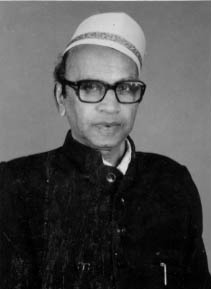
Basavaraj Rajaguru, born on the 24th of August 1917, was had the best grounding in classical music in the Kirana Gharana subtype. Paradoxically, he was the least known among his contemporaries, Bhimsen Joshi and Gangubai Hangal.
Early Years and Education
Basavaraj was born in a family that had a strong base in the fields of music, astrology and academics, and he received his initial training in music from his father, a well-known Carnatic musician. After the death of his father, the 13-year-old Basavaraj joined Pachakshari Gawai as his disciple.
The teaching, which was carried forward in the Guru-Shishya style, was rigorous, with over 15 hours of musical training every day over a period of six years.
Basavaraj gave his first public concert in 1936, appearing with his Guru at a concert in Hampi. After the death of his guru, Basavaraj sought training from legends like Sawai Gandharva, Suresh Babu Mane, Ustad Waheed Khan and Ustad Latif Khan.
His Singing Career and Achievements
By the start of the 1940s, Basavaraj’s fame had spread through the country, and he held concerts nationwide. He could sing in over eight languages, and his repertoire included Thumris, Natyasangeet, Ghazals and Vachans.
He had a loyal fan following and was much in demand as a teacher. All through his life, Basavaraj was a strict vegetarian and teetotaller. While travelling for concerts, he was very particular that even his drinking water had to be carried from Dharwad. He miraculously escaped in 1947 when he narrowly escaped marauding mobs at the Indo-Pakistan border.
He took great care of his voice, and the timbre of his voice remained the same through the years due to this reason. His voice spanned three octaves and his encyclopaedic knowledge of three gharanas: Kirana, Patiala and Gwalior, gleaned from 12 teachers, gave him a vast repertoire of music. He was honoured with the Padma Bhushan in 1991 and the Padma Shri in 1975.
His Later Years and Demise
In 1991, Basavaraj was on his way to board the plane to the US when he met with a minor heart attack. He breathed his last in the month of July, and his disciple Nachiket Sharma was with him during his last minutes. Nachiket later stated that his guru had ordered him to play the initial note SA in the Tambura before his time came.
His Persona and Legacy
Basavaraj was a perfectionist and would make his students repeat passages numerous times till they got it right. His disciples include Nachiket Sharma, Ashok Hugganavar, Ganapati Bhat and Parmeshwar Hegde.
He was a very humble man and had no sympathy with poseurs. In his younger days, at a concert at Nanded in 1955, Pandit Basavaraj Rajguru sang continuously for 12 hours.
In the 1940s, he was challenged to match an excellent Purya rendition by Ustad Nishad Khan. Basavaraj took up the challenge and rendered a flawless version of Raag Sohni. Pandit Basavaraj’s recordings are popular even today among lovers of Hindustani music.